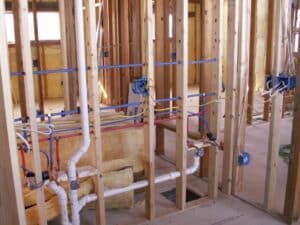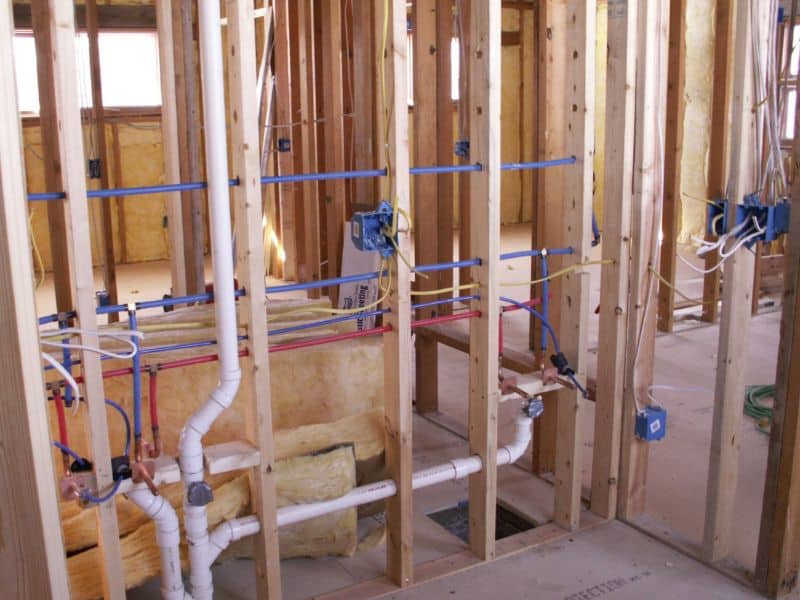 Plumbing plays a fundamental role in new home construction, ensuring the efficient distribution of water, safe disposal of wastewater, and overall comfort and functionality for the occupants. Here are the key aspects and roles of plumbing in new home construction:
Plumbing plays a fundamental role in new home construction, ensuring the efficient distribution of water, safe disposal of wastewater, and overall comfort and functionality for the occupants. Here are the key aspects and roles of plumbing in new home construction:
Water Supply Distribution
Plumbing systems are responsible for distributing potable water throughout the home. This includes providing water to faucets, showers, toilets, appliances, and any other fixtures that require it. Plumbing professionals design and install the network of pipes, valves, and connectors needed to transport water from the main supply to various points within the house.
Fixture Installation
Plumbers install and connect all plumbing fixtures in a new home, such as sinks, faucets, toilets, showers, bathtubs, and water heaters. These fixtures are strategically placed in bathrooms, kitchens, laundry rooms, and utility areas based on the home’s layout and the occupants’ needs.
Hot Water Systems
Plumbing systems incorporate hot water systems that supply heated water to sinks, showers, and appliances like washing machines and dishwashers. This includes the installation of water heaters, whether traditional tank-style or tankless, to provide a consistent supply of hot water.
Drainage and Sewage Disposal
Plumbing systems in new homes are responsible for safely and efficiently disposing of wastewater and sewage. Drainage pipes and sewer lines are installed to carry wastewater away from the fixtures and transport it to the municipal sewer system or a septic tank, depending on the property’s location.
Ventilation and Gas Lines
Plumbing systems also include ventilation systems that ensure proper air circulation in drainage pipes, preventing sewer gases from entering the home. Additionally, gas lines for natural gas or propane appliances like stoves, ovens, and fireplaces are integrated into the plumbing system for cooking and heating purposes.
Backflow Prevention
To prevent contamination of the clean water supply, plumbing systems incorporate backflow prevention devices. These devices ensure that non-potable water, such as wastewater or chemicals, cannot flow backward into the potable water supply.
Rainwater and Stormwater Drainage
In some regions, plumbing systems also handle rainwater and stormwater drainage. Gutters, downspouts, and drainage systems are designed to direct rainwater away from the home to prevent flooding and damage.
Safety and Compliance
Plumbing professionals ensure that all aspects of the plumbing system are compliant with local building codes and regulations. This includes proper installation, materials, venting, and safety features like emergency shut-off valves.
Energy Efficiency and Sustainability
Modern plumbing systems in new homes often incorporate energy-efficient and sustainable features, such as low-flow fixtures, water-saving toilets, and water heaters with high energy-efficiency ratings. These choices help reduce water and energy consumption, lower utility bills, and lessen the environmental impact.
Maintenance and Inspections
After the initial installation, plumbing systems require regular maintenance and inspections to ensure their continued functionality and efficiency. Homeowners should schedule routine checks to identify and address any issues promptly.
In summary, plumbing is an essential component of new home construction that ensures the delivery of clean water, proper disposal of wastewater, and the overall functionality and safety of the home. A well-designed and professionally installed plumbing system is vital for the comfort and well-being of the occupants and is a critical consideration in the construction process.



